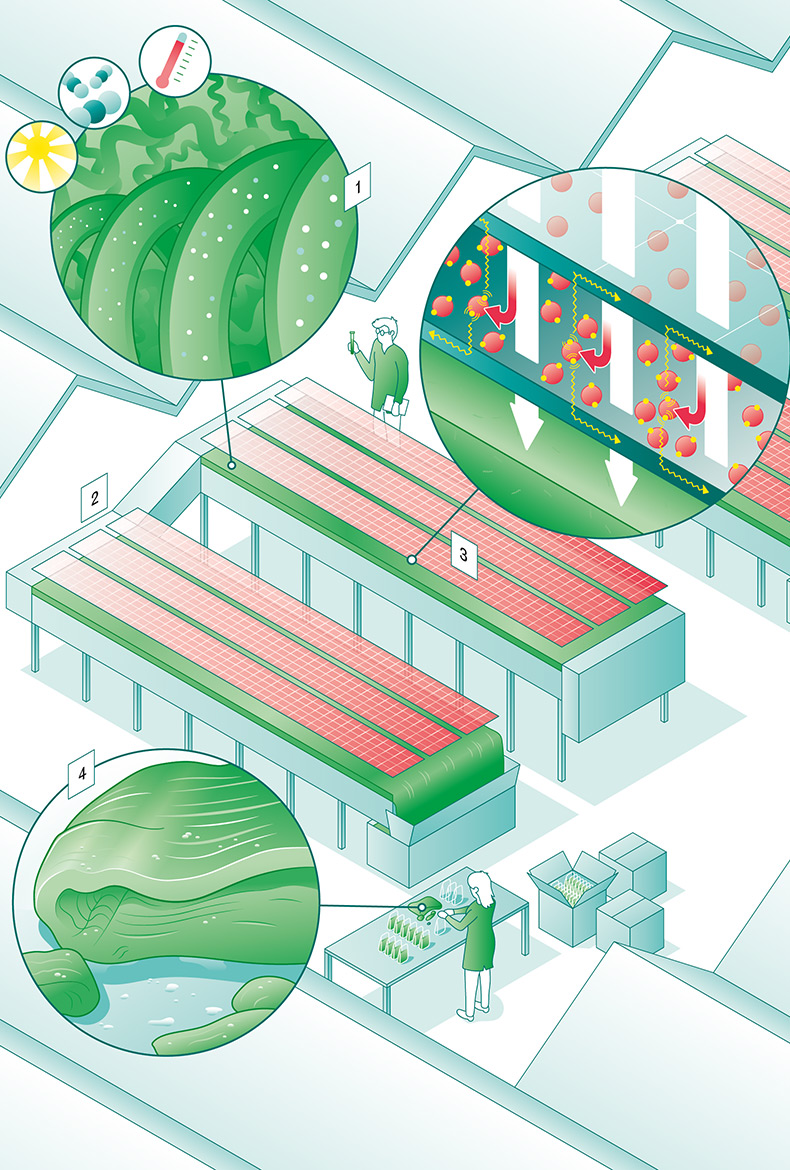How it works
Algae in the shallow
A shallow pond full of algae and covered by solar cells can increase biomass yield tenfold in comparison to open ponds. An EPFL spin-off wants to use this discovery to make the algae industry more efficient.
A shallow pond full of algae and covered by solar cells can increase biomass yield tenfold in comparison to open ponds. An EPFL spin-off wants to use this discovery to make the algae industry more efficient.

Illustration: ikonaut
3 — Solar cells for protection and power generation
The colour-sensitive solar cells that cover the tank at a height of just a few centimetres are also important. They can be equipped with different dye molecules that protect the algae from damage and provide an optimal filter for UV radiation, depending on the type of algae being cultivated. Besides spirulina, Algaltek also uses chlorella and Haematococcus pluvialis. The last of these needs red pigment. The light absorbed by the red pigment excites electrons, which then flow through the conductive titanium dioxide that is used to coat the glass of the solar cell. This enables electricity to be generated as a by-product that is subsequently channelled back into the algae-growing process.
2 — More light in a shallow pond
The EPFL spin-off Algaltek aims to solve these problems. Crucial to their efforts is an experimental tank that is just 1.5 cm in height. Its shallow water depth means that the sunlight can penetrate all the layers of algae completely. This is optimal for stimulating photosynthesis.
1 — Increasing yields
Algae are in vogue. The food industry likes them because they’re rich in protein and can serve as a meat substitute; and the packaging industry sees them as a biodegradable alternative to plastic. But producing them is time-consuming and cost-intensive. This is due to light incidence, CO2 concentration and temperature all having to be controlled and optimised precisely. Spirulina is the easiest algae to cultivate, which is why it’s the one most commonly used. Its yield nevertheless remains low.
